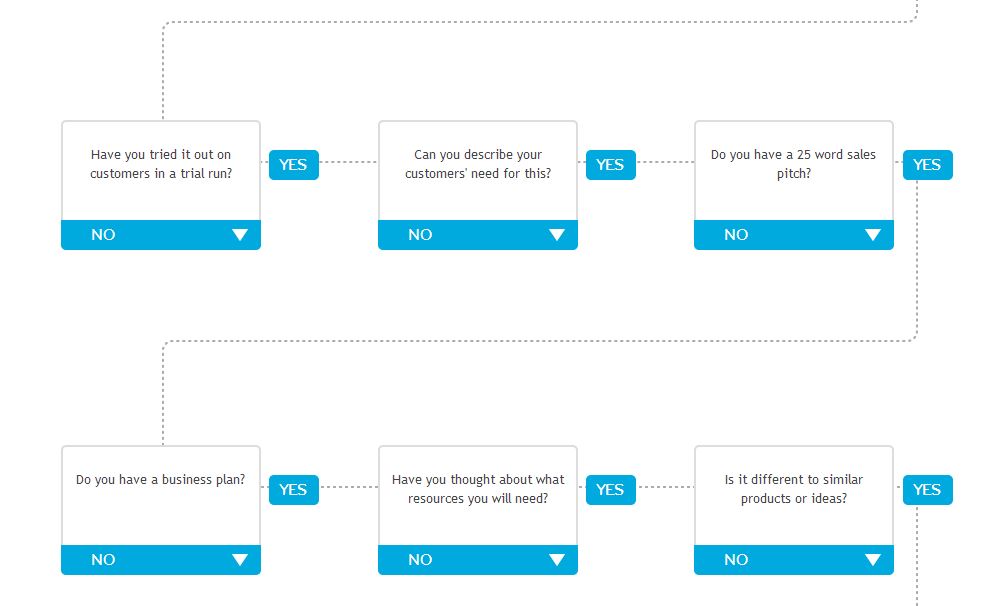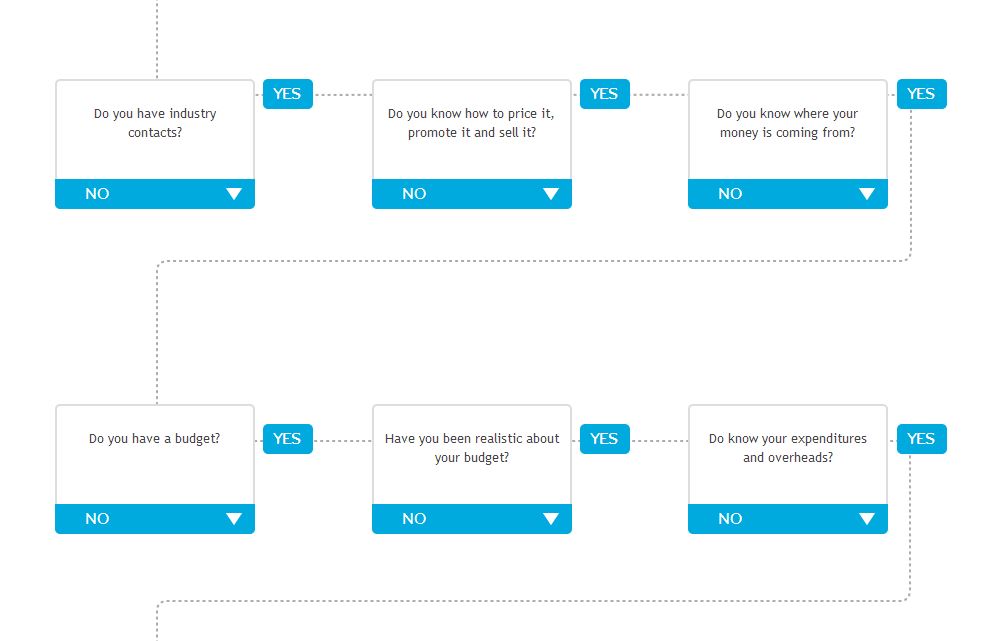7 Reasons Most People Should Build Lifestyle Businesses, Not Startups
I could go one of two routes. I could take one of my crazy ideas and go the startup path, try and chase down funding, spend 80 hours a week to found a company, and take years off my life while trying to make it happen. Or I could build a lifestyle business, where I was the only employee and made just enough to support myself while having more freedom to do the things I really wanted to. A few years back, I wasn’t stoked about my position as a financial analyst, and knew I wanted to run my own business. The problem was, I had no idea what I wanted that business to look like.
I took off to Thailand and decided to give the latter a shot. Three years later, I’m absolutely convinced that for the majority of the people with entrepreneurial aspirations, you’re better off starting a lifestyle business than pursuing a startup. Here are 7 reasons why:
- You are not Instagram. For every startup that sells and makes millions, there are hundreds — if not thousands — that fail or, even worse, continue to just barely make it, sucking the life out of you in the process.
- Building a startup is building a 9-to-5. While it’s fun to start up running on nothing but adrenaline and Red Bull, the excitement wanes and the monotony sets in after a few months. Many startup companies turn into really bad 9-to-5 jobs for the founders. They get mired in day-to-day details and work harder than anyone else, but they don’t get the benefits they signed on for as an entrepreneur in the first place. For example, Jun Loayza who, after getting over a million in funding and successfully selling two companies, left his current startup to pursue a lifestyle business.
- You won’t wait years to turn a profit. So someone gave you a bunch of money and told you to go build your business — cool, but that doesn’t mean you’re profitable. When you work for yourself, your overhead is limited. Salaries, office space, benefits? That’s all on you. I started my most recent business with less than $500 and it took me three sales to become profitable. Most startups are lucky to be profitable after three years!
- You can work from a beach with a Mai Tai. You know that dream everyone had after reading the 4-Hour Workweek where they’re chillin’ on a beach with a cocktail, working from a laptop? That’s really possible. Sure, those haven’t been the most productive days of my life, but a lifestyle business lets you choose when and where you work — generally, all you need is an Internet connection. This year I’ve already worked from places like Vail, Playa del Carmen, Cuba, New York, China and Jordan among others — all without skipping a beat in my business.
- You’ll have more flexibility than Gabby Douglas. You say you wanted to become an entrepreneur for increased flexibility and control in your life? Fat chance in a startup, especially when you’re playing with someone else’s money. As a lifestyle entrepreneur, you truly have the flexibility to set your own schedule. Take Laura Roeder, for instance — she moved from Southern California to spend a few months in London, where she got to attend this year’s Olympic games. A lifestyle business is one that promotes the lifestyle you want to live. For many, that’s more time with friends and family; for others, it’s travel and adventure. You get to decide.
- Stress is minimized. As an entrepreneur, stress will never go away — it comes with the territory. But you’d better believe that while starting up, it has the potential to be much worse. Thoughts like “How am I going to make payroll this month?” and “Revenues were 30 percent less than projections, what will the investors think?” or “My partners and I have drastically different opinions of where the business should go, what do I do?” are all common issues in a startup. A lifestyle entrepreneur has no one to answer to but themselves, thus reducing the stress that comes with common business problems. Stress of getting started can be minimized even further by running your business from abroad, where it’s cheaper to live.
- You can become a modern-day Renaissance person. I can’t focus on just one thing; I’m always all over the place. Being a solopreneur has forced me to learn how to handle all aspects of business — marketing, accounting, sales…you name it, I do it. In this position, you grow your expertise and become a more well-rounded business person, and that will undoubtedly help you in any future endeavors. The phrase “Jack of all trades, master of none” isn’t always a bad thing.
Boracay Office.
Are all startups bad? Of course not. Are all lifestyle businesses beaches and daiquiris? Not a chance. However, if you’re looking to maximize your enjoyment while have the freedom and security that comes with knowing you have full control of your life, then a lifestyle business may be exactly what you need.
Courtesy of YEC
Sean Ogle is an expert at helping people turn their passions and skill-sets into sustainable businesses that can be run from anywhere on Earth. As the founder of Location 180, LLC he uses the power of his blog to get the message out on the benefits of location independent entrepreneurship.
Good Life Project Creed
KPCB Internet Trends 2013
by Kleiner Perkins Caufield & Byers on
The latest edition of the annual Internet Trends report finds continued robust online growth. There are now 2.4 billion Internet users around the world, and the total continues to grow apace. Mobile usage is expanding rapidly, while the mobile advertising opportunity remains largely untapped. The report reviews the shifting online landscape, which has become more social and content rich, with expanded use of photos, video and audio. Looking ahead, the report finds early signs of growth for wearable computing devices, like glasses, connected wrist bands and watches - and the emergence of connected cars, drones and other new platforms.
Why Boulder?
oh... just because...
BOULDER'S RECENT ACCOLADES
- Top 10 Metros for Female Executives (#1) - Avalanche Consulting, Feb. 18, 2013.
- The 20 Most Innovative Cities in the U.S. (#5) - Business Insider, Feb. 1, 2013.
- Best-Performing Cities 2012 (#15) - Milken Institute, Jan. 15, 2013.
2012 COMMUNITY HONORS
- Cities Where Startups are Thriving (#1) - CNNMoney, Nov. 27, 2012.
- Bicycle Friendly Community (Platinum) -League of American Bicyclists, Oct. 18, 2012.
- 10 Incredible and Underrated Cities To Live In (#6) - BuzzFeed, October 2012.
- Top 10 U.S. Metropolitan Statistical Areas Ranked by Percentage of Workers 16 Years and Over Who Worked From Home (#1) -American Community Survey (2010 U.S. Census), October 2012.
- Top 20 Small Metros for College Students(#3) - American Institute for Economic Research, Oct. 1, 2012.
- The Fittest U.S. Cities for Baby Boomers - Spry, Sept. 17, 2012.
- America's Best Places to Live (#60) - Money, September 2012.
- Top Cities for Technology Start-ups (#9 Boulder/Denver) -USA Today, Aug. 23, 2012.
- 5 Happiest Cities in America -AARP, Aug. 23, 2012.
- Summer in the U.S.A.: 20 Best Vacation Destinations - Frommer's, June 2012.
- America's Foodiest Town - CoutureColorado.com, June 5, 2012.
- Nine Fittest Towns of the West (#3) - Sunset, June 5, 2012.
- America's Top 50 Bike-Friendly Cities (#3) - Bicycling, May 21, 2012.
- Most Well-Read Cities in America (#5) - Amazon.com, May 15, 2012.
- Top 10 Cities for Affordable Vacations (#7) - Livability.com, April 20, 2012.
- Tree City USA - National Arbor Day Foundation (for the 28th consecutive year).
- Best Restaurant Neighborhood - 2012 (Pearl Street Mall) - Westword, March 2012.
- Skinniest City in America - Gallup, March 7, 2012.
- Top 10 Cities for Well-being (#5) - Gallup, March 7, 2012.
- Most Bike-friendly Vacation Cities (#4) - Virgin Vacations, March 7, 2012.
- Top 10 Foodie Cities (#3) -Livability.com, Feb. 17, 2012.
- Top 10 College Towns, 2011 (#1) - Livability.com, Feb. 7, 2012.
- America's Healthiest Metros (#3) - The Atlantic Cities, Jan. 3, 2012.








NVCA: VCs Talk Accelerator Bubbles, Accelerator Success
By Lora Kolodny
Gathering at the National Venture Capital Association’s VentureScape conference this week, venture and corporate investors met with executives leading top startup accelerators in a crowded session to discuss the health of the “startup ecosystem.”
Two main questions on venture investors’ minds: “How do we know if accelerators are succeeding?” And: “Are we in an accelerator bubble?”
The managing director of Foundry Group and TechStars co-founder Brad Feld said he thinks there is no “accelerator bubble.” In fact, he wants to see an accelerator established in every town with a population of at least 100,000 in the U.S., to foster a healthy, local and national economy.
He also urged investors to be patient in their judgment of these programs.
The first “true accelerator,” Y Combinator, started in 2005, he noted, and TechStars followed shortly after. By 2008, many more accelerators began cropping up, like DreamIt–one of the first such programs on the East Coast. But it took until 2009 for even the earliest players to enroll a “meaningful number of companies,” Feld observed.
For its part, TechStars measures and publicly reports data including how many companies apply and go through its various programs. After they leave, it notes how many startups remain in business, how much follow-on funding they raise from outside investors, and whether they have exited or shut down. “Funding in and of itself is not a measure of success,” Feld cautioned.
About one in 10 of TechStars companies “bootstraps,” and doesn’t raise funding from outside investors, but still creates jobs and wealth, he said. Early classes from TechStars Boulder have still-active companies delivering 2x and 3x returns to investors, so far.
Springboard Enterprises–which runs accelerators focused on health-care and media ventures led by women–also tries to measure serial entrepreneurship, and alumni networking by its participants.
A director of programming at Springboard Enterprises, Joshua Henderson, explained, “We want to see founders who support a next crop of companies as mentors or angel investors [to them]. We also like to see entrepreneurs go on to start new ventures.”
Rock Health founder Halle Tecco said specialized accelerators should have additional metrics tailored to their missions. Her program, which launched in 2010, focuses on digital-health startups.
“Follow-on funding is a good litmus test for whether startups are scalable and sustainable, true,” Tecco said. “But in digital health, we want to see companies making a positive impact to clinical outcomes. We’re figuring out how to measure that, still. Is it pounds lost, or errors reduced at hospitals? We’re learning everything we can.”
Unlike TechStars and Springboard, Rock Health is run as a nonprofit accelerator, with a for-profit seed fund, which offers $100,000 seed-stage investments to each accepted startup.
A pioneer of the venture capital industry, David T. Morgenthaler, said accelerators help venture capital firms by forcing entrepreneurs to “fail fast,” and truly understand their risks before they even consider raising venture capital.
But Morgenthaler agreed with Feld, generally, that there is no accelerator bubble yet, and that it is probably too early for investors to say how well these organizations perform, both as sources of dealflow for venture capitalists and as early-stage funds that generate real returns for limited partners.
Write to Lora Kolodny at lora.kolodny@dowjones.com. Follow her on Twitter at @lorakolodny
Where Have All The Facebookers Gone? Employee Retention v. Promoting Entrepreneurship
In a 2011 presentation at Startup School,Facebook founder and CEO Mark Zuckerberg made his position on employee retention abundantly clear: if people want to work at startup for a year or two and then pursue a business idea of their own, more power to ‘em. In fact, Zuckerberg said, he’d be proud.
It’s a funny statement for a company that’s been entrenched in talent wars since its 2004 founding. Facebook employees are offered myriad perks, cushy office space and benefits to bring them into the fold and even more once they’re on board.
But there’s one perk of working at Facebook that’s gone largely unexamined: the bragging rights employees take with them when they move on. Online recruitment and human resource firm Careerify found that a full 10% of former Facebook employees founded their own companies upon leaving Zuckerberg’s fold—and many enjoyed a serious bump in funding (and buzz) thanks to the Facebook name on their founder’s CV.
According to Careerify, 113 former Facebook employees are currently serving as founder and CEO of their own startups—from Asana to Clouderato Path. According to Careerify:
Of the 113 CEOs that we observed, over 10% are Stanford University Alumni. And 27% of the start-ups founded by former FB-ers’, are located in the San Francisco Area/Palo Alto area (indication of the strong hold that the Silicon Valley has on their residents). According to Angel List data, those that have listed their start-up average a valuation of $4.6M, trailing only MySpace ($5.5M),Google ($5.2M), PayPal ($5.2M), Adobe ($5.2M), Apple($4.8M), Accenture ($4.8M), Electronic Arts ($4.8M), and Sun ($4.7M). Facebook founders are also likely to raise higher than the average entrepreneur in the US.
That former Facebookers benefit from the brand association their relationship with Zuckerberg is no small consideration. To Zuckerberg, it seems a fair trade-off, a symbiotic relationship really. Talent contributes to Facebook for as long as their onboard (by Careerify’s measure some for as little as a few months), but when they move on they can leverage their experience and the high-wattage of the Facebook halo.
Check out the infographic for highlights–and Careerify for more insights.

Google's Innovative New Business Model For Google Glass
SUN VALLEY, ID - JULY 12: Google co-founder Sergey Brin (L) wears Project Glass prototype glasses at Allen & Company's Sun Valley Conference on July 12, 2011 (Image credit: Getty Images via @daylife)
Google Glass has plenty of novelty about it. When GoogleGOOG-0.28%Ventures teamed up with two venture capital firms, KPCB and Andreessen Horowitz, to fund the Google Glass ecosystem, apart from the excitement of wearable computing we also witnessed the emergence of a new kind of business model and a new approach to innovation.
We have seen business ecosystems before. Apple is the classic ecosystem, with tens of thousands of developers producing for its iconic iPhone and iPad products. But Steve Jobs only released an SDK for third partyapplications for the iPhone in March 2008, 9 months after the phone’s release, and after it was already a clear success.
But in the case of Google Glass there is no commercial product. And it is hard to argue that Glass is a Google invention.
5 Ways to Make Google Glass BetterPeter CohanContributor
Google Fiber and Google Glass Could Also Come To NothingHaydn Shaughnessy Contributor
Wearable computing of exactly this kind is already in the market. Vuzix, for example, looks a whole lot better by pretending not to be a pair of glasses.
And there are competitors like Telepathy hoping to get there before Google.
But Google, itself, so far has a $1500.00 Explorer version, or, put another way, a high cost developer entry price.
What Google has done by going to a developer program first and by holding competitions such as #ifihadglass is a neat hybrid between acknowledging it doesn’t really know what to do with a glasses-like heads up display, and a well-tiered, crowdsourced attempt to find out.
But most crowdsourcing projects revolve around existing products and existing markets – the big ones, remember, are MyStarBucksIdea and Dell’s Ideastorm. In those projects the public is asked to help improve a product or service. But Google has asked people in at the invention phase, in essence asking people to help them invent what this product should do, if it were widely, commercially available.
And it has orchestrated that with great skill. It is only two months ago that Sergey Brin expressed doubt that Glass would ever make it to market and here it is, the hot topic in tech circles.
So let’s look at the components and see if it is a new innovation model for other companies to follow:
1. Product idea – Consumer heads up displays. Can specialist HUDs, a proven product, be adapted to consumer environment?
2. Validation – crowdsourced competition to find out what they might be used for, following high profile publicity campaign for possible hardware product.
3. Rapid evaluation of ideas to maintain momentum.
4. Ecosystem formation. Select developer community and line up “ecosystem”.
5. Financing. Put development funding in place – form venture capital alliance.
6. Propose tentative launch date….and iterate public validation with product development.
I think this is pretty audacious and a potentially brilliant case study in how to do innovation that has potentially huge pay-offs at ultra-low financial and development risk. It’s almost lean but far too large to fall into the lean start-up category.
The project is well hedged. Google’s own investments will be relatively low, even after the invention phase is over. The developers bear that cost.
The majority of the risk lies in not getting the product right and having to close the project down. But that is a reputation risk not a financial one, because Google will have laid out very little in cash. The hedge is “this is an experiment” and “we wanted to explore the possibilities and create some excitement”. That’s true and so is the final hedge – who lost anything by it really?
GE tried to do something similar with its healthymagination project, where GE promised $ 1billion for health research in an open innovation environment. GE’s goal is to create a new type of ecosystem for cancer research. You may not have heard of it. The first segment of that consisted of selecting 5 groups to work on new cancer diagnosis, care and cure projects.
But look at the difference in scale. There look to be about 2,000 Explorer or developer devices and a further 8 – 10,000 for winners of If I Had Glass. And no way is Google going to spend $1 billion.
The rules of the game
How are you playing your relationships, your business, your life? Are you deciding the rules or are they playing you? Basically, who's permission are you waiting for?
I've always been the outlier who's on the vagabond career path. Perhaps I'm A.D.D. or perhaps i'm just curious.
This site is meant to be a little exploration of what I'm passionate about. It definitely doesn't fit in a resume or even a bio most likely because I've always been reticent when it comes to anything involving four corners.
I'd like my friends to become yours. I'd like to see your ideas grow in tandem. I'd like to see all of us living beyond our boundaries and co-creating the coolest of concepts.
Are you willing to live the blatantly uncommon life? I'm constantly scared shitless to do it and am blown away when I witness others living theirs.
I have an offer. Let's go big together and hold each other accountable.
For fuck's sake... let's shift the game.
Start-up Flow Chart - The Super Basics
The Strongest Careers Are Non-Linear
For years we have been talking about the education bubble and the problem that colleges charge tons of money and then graduates are unemployable and in debt. Colleges are responding by becoming job preparation centers. And Frank Bruni, opinion editor for the New York Times, says this is a waste of time and resources. Here’s what’s better:
1. Skipping college.
The real issue we have with admitting that college is not a path to the work world is then we have to ask ourselves why we send our kids to high school. There is plenty of data to show that teens are able to manage their lives without the constraints of school. The book Escaping the Endless Adolescence is chock full of data, and a recent article by my favorite journalist, Jennifer Senior, shows that high school is not just unnecessary, but actually damaging to teens who need much more freedom to grow than high school affords.
2. Focus on internships instead of school.
Kids should be working in internships in high school. Because the best path to a good job is a bunch of great internships. But great internships don’t go to people who need money. They are mostly for young people. Yes, this is probably illegal and classist and bad for a fluid society. But we will not debate that here. Instead we will debate why kids need to go to college if the internships are what make them employable? Kids should do internships in high school and by their college years, they are capable of real jobs where they are doing work that people value, with cash.
You cannot take this route if you’re saddled with huge student loans. You can’t take this route if you’re inundated by homework in required subjects you don’t care about. You can’t take this route if you have no work experience when you graduate college. It’s too late. (Don’t tell me you need to go to school to learn, okay? People just do not believe this anymore.)
I was reading the Fortune list of 40 under 40 and I was struck by the career history of Kevin Feige (number 11 on the list). He’s president of Marvel Studios at age 39. He wrote that he interned with the Superman movie director as a film student and that was the last job application he filled out. That’s because if you get an internship with someone great, and your performance is great, your network will cover your employment needs for a very long time.
3. Start a company instead of writing a resume.
I’m struck by Marissa Mayer (number 3 on Fortune’s list) whose announced acquisition strategy is buying small, cheap companies. Which is, in effect, buying the team. Silicon Valley calls these acqui-hires. She is looking at young people who start companies that are not necessarily successful in terms of product or sales but successfully market the founders as visionaries, self-starters, and hard workers. You can’t show those traits in school, so if you have those traits, you slow yourself down by going to school where you cannot exhibit your best, marketable traits.
4. Refuse to present yourself in a linear way.
Do any workaround that lets you forgo the linear obsession the standard resume format. Because linear presentations favor people who have long, rule-following careers – which don’t necessarily make you look good anyway. I could write a post ten thousand paragraphs long of all the new things people with nonlinear work histories are doing to get jobs.
People use twitter as a resume, according to the Wall Street Journal, which requires only that you publish ideas, not any sort of academic experience.
Young people are selling stock in themselves - paying out dividends for decades at a time.
Agents represent workers who pick and choose projects that match them rather than signing on for indefinite amounts of time. The Harvard Business Review calls this supertemping. Business Week calls it going Hollywood.
But here’s the big takeaway. A fundamental shift is taking place, where the path to getting a job is massively circumventing college credentials. And, at the same time, the American public is fed up with the insane debt that college are expecting new grads to take on in order to graduate. (Good essay: How College Ruined My Life.)
If you are not going to school in order to “fit” into the adult world, then why are you going to school? The love of learning, presumably. But school reform pundits are 100% sure that kids will choose to learn if you put no constraints on them. They will just learn what they want. Best example: The MIT program that gave iPads to illiterate kids in Ethiopia, and they taught themselves to use it, program it, and read it in English. No teacher. No curriculum.
The biggest barrier to accepting the radical new nature of the job hunt is the reverberations throughout the rest of life. If you don’t need school for work, and you don’t need school for learning, then all you need school for is so parents can go to work and not worry about taking care of their kids.
It takes bravery to go against the grain. It’s difficult to say that the great learning and the great jobs come from leaning out, doing things in a nonlinear, non standard way, and playing only by the rules that fit your own style for personal learning and growth.
Penelope Trunk











